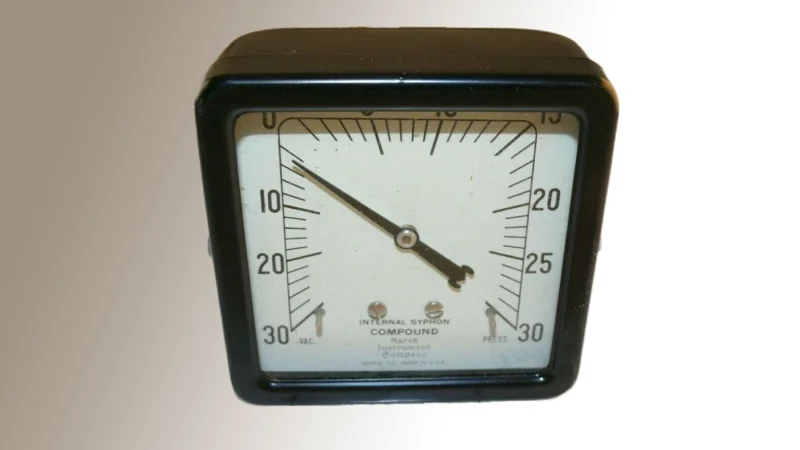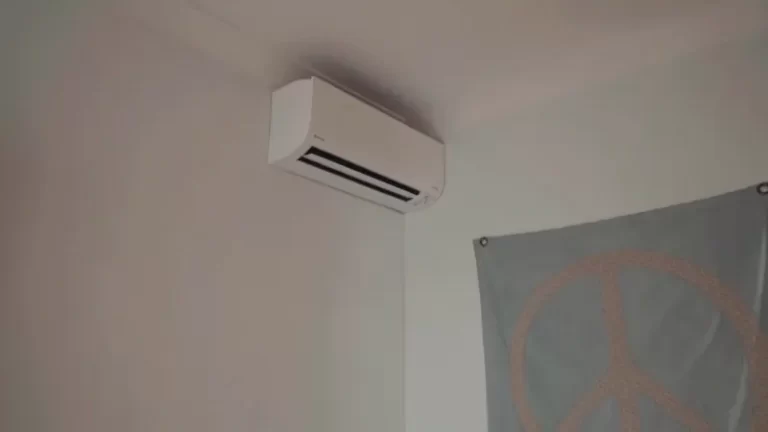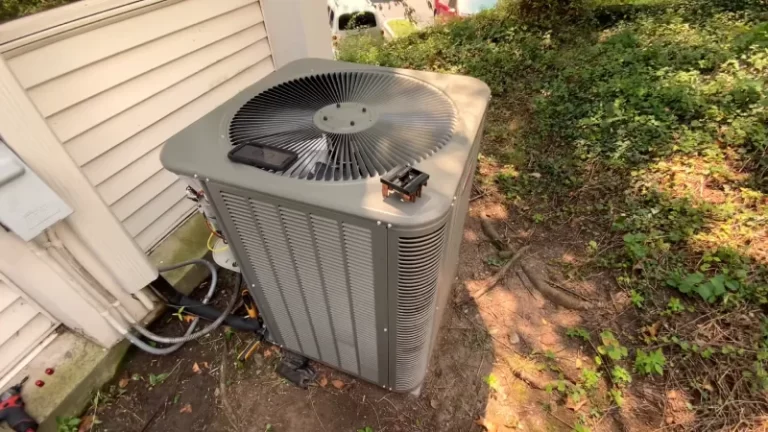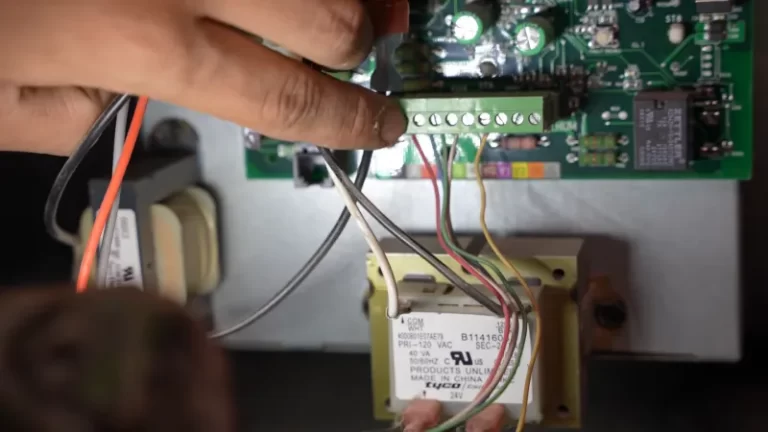Internal Syphon Gauge [What is it? How it Works?]

An internal syphon gauge is a type of pressure gauge commonly used in steam heating systems. Its design features an internal syphon tube, which helps to protect the gauge mechanism from the high temperature and pressure of live steam.
Accurate pressure readings are crucial for the proper functioning and efficiency of a steam heating system, and internal syphon gauges are a reliable way to measure and monitor the pressure in the system.
You'll Learn About
What is Internal Syphon Gauge?
An internal syphon gauge is a type of pressure gauge that is used in steam boilers. The gauge is typically connected to the steam space within the boiler, and is used to measure the pressure of the steam inside the boiler.
The gauge is typically mounted on a syphon, which is a loop-shaped device that allows condensate to form in the bottom of the loop and shield the gauge’s internal components from the heat of the steam. The syphon does not affect the pressure between the loop and the gauge, which is always maintained at boiler pressure.
This helps to ensure accurate and reliable pressure readings. Additionally, internal syphon gauges are typically calibrated to operate at no more than 2/3 of their scale, in order to prevent strain on the gauge and potential false readings.
| Feature | Description |
|---|---|
| Connection | Connected to the steam space within the boiler. |
| Size | Typically has a face with a sufficient size, such as 6 inches. |
| Installation | Installed on the vertical plane. |
| Calibration | Operates at no more than 2/3 of its scale. |
| Mounting | Mounted on a siphon. |
| Siphon Function | Allows condensate to form in the bottom of the loop and shield the gauge’s internal components from the heat of the steam. |
| Pressure Maintenance | Maintains pressure between the loop and the gauge at boiler pressure. |
| Accuracy | Provides accurate and reliable pressure readings. |
How Internal Syphon Gauges Work
Internal syphon gauges are designed to provide accurate pressure readings in steam heating systems while also protecting the gauge mechanism from the high temperature and pressure of live steam.
They achieve this by using an internal syphon tube, which is a small tube inside the gauge that directs the steam away from the gauge mechanism. This design allows the gauge to be placed directly in the steam line without the need for an external syphon or other protective measures.
In traditional gauges with external syphons, the steam is directed through an external loop or tube before entering the gauge. This helps to cool the steam and protect the gauge mechanism, but it can also increase the risk of clogging or obstruction and require more complex installation and maintenance.
Internal syphon gauges offer several advantages over traditional gauges with external syphons, including simpler installation, reduced risk of clogging, and increased protection against damage from live steam. However, they may not be compatible with certain types of steam traps and may be more expensive than traditional gauges.
Advantages Of Internal Syphon Gauges
Advantages are protection against damage from live steam, reduced risk, and easy to install.
Protection Against Damage From Live Steam
One of the main advantages of internal syphon gauges is their protection against damage from live steam. Because the internal syphon tube directs the steam away from the gauge mechanism, the gauge is less likely to be damaged by the high temperature and pressure of the steam. This can help to extend the life of the gauge and reduce the need for costly repairs.
Reduced Risk
Internal syphon gauges also offer a reduced risk of clogging or obstruction compared to traditional gauges with external syphons. The internal syphon tube is less prone to clogging or obstruction than an external loop or tube, which can improve the accuracy and reliability of the gauge.
Easy to Install
In addition to these benefits, internal syphon gauges are generally easier to install and maintain than traditional gauges with external syphons. They do not require the installation of an external syphon or other protective measures, which can simplify the installation process and reduce the need for ongoing maintenance.
Overall, internal syphon gauges provide a reliable and low-maintenance solution for accurate pressure readings in steam heating systems.
Disadvantages Of Internal Syphon Gauges
While internal syphon gauges offer several advantages, they do have some potential disadvantages to consider.
Limited Compatibility
One disadvantage is their limited compatibility with certain types of steam traps. Some steam traps may not be compatible with internal syphon gauges, which could limit the options for monitoring the pressure in the system.
Cost
Another potential disadvantage of internal syphon gauges is their cost. While the long-term cost savings from reduced maintenance and repair may offset the initial higher cost, internal syphon gauges may be more expensive than traditional gauges with external syphons. This could be a factor to consider when deciding which type of gauge to use in a steam heating system.
Overall, it’s important to weigh the pros and cons of internal syphon gauges and consider the specific needs and requirements of your steam heating system before making a decision.
Tips For Using And Maintaining Internal Syphon Gauges
To ensure the best performance and longevity of your internal syphon gauge, it’s important to follow proper installation and handling procedures. This includes carefully following the manufacturer’s instructions for installation and avoiding any rough handling or abuse of the gauge.
Regular Calibration and Inspection
Regular calibration and inspection of the gauge can also help to ensure its accuracy and reliability. Depending on the specific requirements of your system, this may include periodic checks of the gauge’s reading against a known standard and adjustments as needed.
Troubleshoot and Fix
If you experience any issues with your internal syphon gauge, there are a few steps you can take to troubleshoot and fix common problems. These may include checking the gauge for visible damage or obstruction, cleaning the internal syphon tube, and adjusting the pressure range as needed.
If the issue persists, it may be necessary to consult a professional or the manufacturer for further assistance. By following proper installation and maintenance procedures, you can help to ensure the accuracy and reliability of your internal syphon gauge and keep your steam heating system running smoothly.
How to Use the Device Safely?
Here are a few additional tips for using and maintaining internal syphon gauges in steam heating systems:
Pay Attention To The Pressure Range
The pressure range of your internal syphon gauge should be properly set for your specific steam heating system. If the range is set too high or too low, the gauge may not provide accurate readings. Be sure to consult the manufacturer’s instructions or a professional to determine the appropriate pressure range for your system.
Keep The Gauge Clean
To ensure accurate readings, it’s important to keep the internal syphon gauge clean and free of any dirt, debris, or obstruction. Regularly inspect the gauge and clean it as needed to maintain its accuracy.
Use A Protective Cover
If the internal syphon gauge is located in an area where it could be damaged by physical impact or other factors, it’s a good idea to use a protective cover. This can help to extend the life of the gauge and ensure its accuracy.
Check For Leaks
Steam leaks can cause a loss of pressure and efficiency in a steam heating system. Be sure to regularly check for leaks and fix them as needed to maintain the proper pressure and performance of your system.
Consider A Digital Gauge
If you want the most accurate and easy-to-read pressure readings, you may want to consider using a digital internal syphon gauge. These gauges use digital technology to provide precise readings and can be easily read from a distance.
By following these tips and regularly maintaining your internal syphon gauge, you can help to ensure the accuracy and reliability of your steam heating system.
Editor’s Note
If you have a steam heating system and that you’re experiencing some issues with the pressure and vacuum readings on your gauge. It’s normal for a steam heating system to have a pressure range of 0.5 to 2 pounds per square inch gauge (psig). A reading of 9 psig is significantly higher than the normal range and could indicate a problem with the system.
One possible issue could be a clogged or blocked steam trap or vent, which could cause a build-up of pressure in the system. Another possibility could be that the steam pressure is being increased too much, either by the aquastat or by the pressuretrol, which could cause the pressure to rise too high.
It’s also worth noting that the vacuum reading on the gauge could be caused by a number of factors, including a faulty gauge or a problem with the system’s air vents. If the vents are not functioning properly, it could lead to a vacuum in the system.
I would recommend consulting a professional to assess and diagnose the issue with your steam heating system. In the meantime, it’s important to not make any adjustments to the system until the issue has been properly diagnosed and addressed, as making changes to the system without a proper understanding of the problem could potentially cause further issues.
Conclusion
Internal syphon gauges offer a reliable and low-maintenance solution for accurate pressure readings in steam heating systems. Their design features an internal syphon tube that helps to protect the gauge mechanism from the high temperature and pressure of live steam, which can extend the life of the gauge and reduce the need for costly repairs.
Internal syphon gauges also offer reduced risk of clogging or obstruction and simplified installation compared to traditional gauges with external syphons. However, they may be more expensive and may have limited compatibility with certain types of steam traps.
To ensure the best performance and longevity of your internal syphon gauge, it’s important to follow proper installation and handling procedures, regularly calibrate and inspect the gauge, and troubleshoot and fix any issues that may arise. For assistance with installation and maintenance of steam heating systems, it’s always best to consult a professional.




